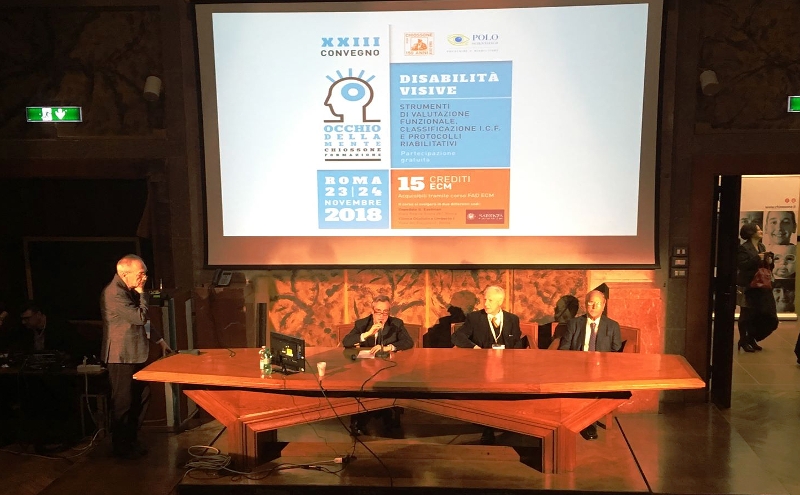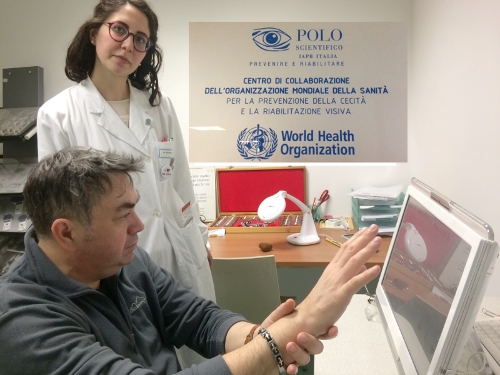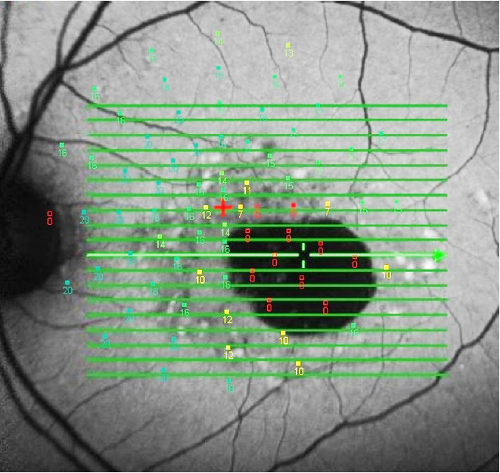A conference on sight prevention and vision rehabilitation for ophthalmologists and orthoptists was held in Rome between 23-24 November 2018
 “The Eye of the Mind” is the title of the Conference on vision rehabilitation that was held on 23rd November, 2018, at the George Eastman Dental Hospital in Viale Regina Elena 287, Rome. The meeting continued on the following day at the Ophthalmology Clinic of the Umberto I Polyclinic Hospital.
“The Eye of the Mind” is the title of the Conference on vision rehabilitation that was held on 23rd November, 2018, at the George Eastman Dental Hospital in Viale Regina Elena 287, Rome. The meeting continued on the following day at the Ophthalmology Clinic of the Umberto I Polyclinic Hospital.
The first day was dedicated, in particular, to neuro-ophthalmological issues in children and adults (including brain plasticity), while presentations on the second day focused more on technical-rehabilitative aspects, and on the protocols (rehabilitation procedures) and the assessment of vision disabilities.
The experts who were invited to speak hailed from numerous institutions, such as the A. Gemelli Polyclinic Hospital in Rome, the National Centre for Vision Rehabilitation, the Sapienza University of Rome, the David Chiossone Institute in Genoa, the Gaslini Hospital, the World Health Organization, the Pavia Eye Clinic, etc.
Mr. Giuseppe Castronovo, President of IAPB Italy, opened the event on 23rd November, together with Prof. F. Cruciani, Prof. A. Lambiase (Sapienza University) and the President of the Chiossone Institute, Prof. C. Cassinelli. In his speech, Mr. Castronovo said:
Sight and rehabilitation are two wonderful words. Sight gives us freedom and autonomy: we must do everything we can to avoid young people, adults and the elderly losing it.
In a subsequent working session, Dr. Simona Turco – an ophthalmologist who works at the National Centre founded by IAPB Italy at the A. Gemelli Polyclinic Hospital – presented a home-based vision rehabilitation program (Eye Fitness) that was developed by the National Centre, which uses an innovative IT platform.
On 24th November, the case studies of a number of adults and visually impaired children who had followed a vision rehabilitation path, in particular at the National Centre, were also presented at the Aula Magna of the Ophthalmology Clinic of the Sapienza University.
The training course was free of charge and catered primarily to doctors and orthoptists [Participants were awarded 15 CME credits]. It was organized by the Chiossone Institute – its 150th anniversary is celebrated this year – in collaboration with the National Centre.





 It is a one of a kind World Health Organization (WHO) Collaborating Centre in the field of blindness prevention and visual rehabilitation. We’re talking about the National Centre, which has just renewed an agreement with the WHO for a further three years (until May 1, 2020).
It is a one of a kind World Health Organization (WHO) Collaborating Centre in the field of blindness prevention and visual rehabilitation. We’re talking about the National Centre, which has just renewed an agreement with the WHO for a further three years (until May 1, 2020).

 More ophthalmological data, more collaboration between professionals, integrated rehabilitative paths to teach visually impaired people to see better. The International Agency for the Prevention of Blindness-IAPB Italy and WHO have joined together to identify common standards for vision rehabilitation worldwide.
More ophthalmological data, more collaboration between professionals, integrated rehabilitative paths to teach visually impaired people to see better. The International Agency for the Prevention of Blindness-IAPB Italy and WHO have joined together to identify common standards for vision rehabilitation worldwide.
 Consider a disease such as Stargardt’s maculopathy. People who suffer from it have great difficulties in reading, are dazzled by sunlight and their visual abilities progressively weaken in their youth and over their working life, in particular, at the centre of the visual field.
Consider a disease such as Stargardt’s maculopathy. People who suffer from it have great difficulties in reading, are dazzled by sunlight and their visual abilities progressively weaken in their youth and over their working life, in particular, at the centre of the visual field.